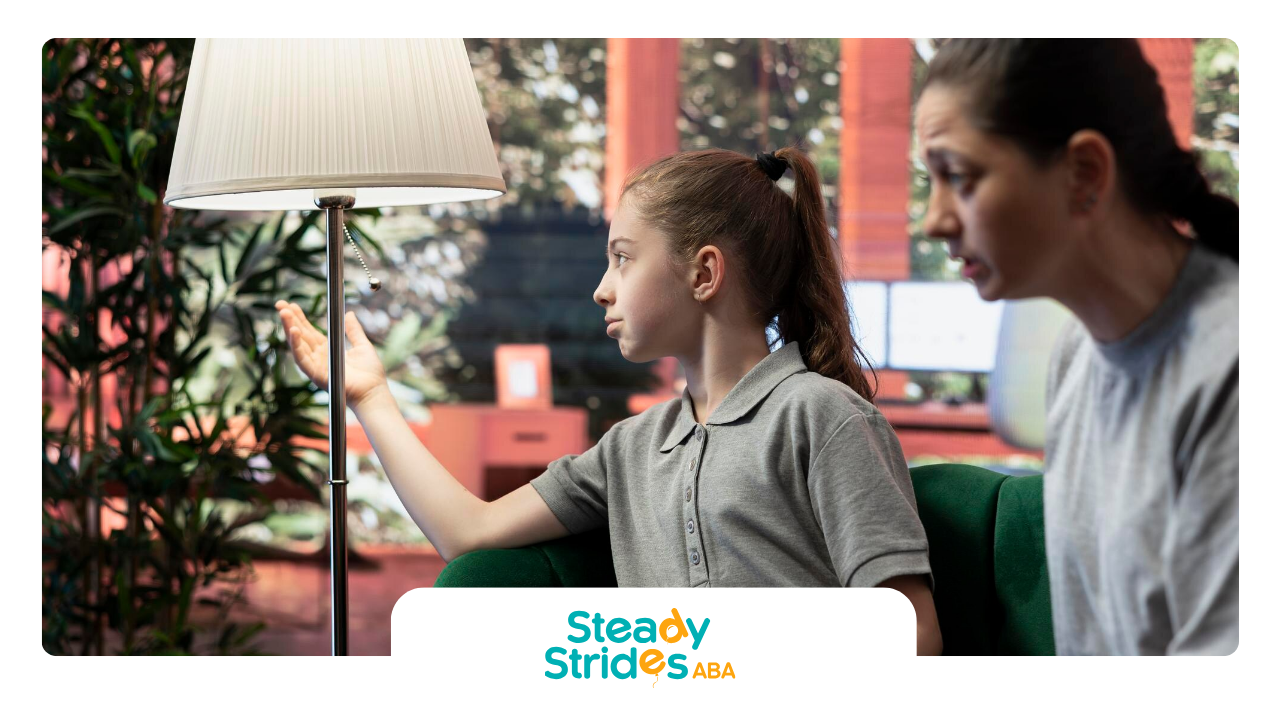Key Highlights
- This blog explores the relationship between autistic toddlers and chasing games, considering sensory sensitivities and behavioral responses.
- It delves into whether autistic toddlers enjoy being chased and the factors that can influence their enjoyment.
- The blog discusses the benefits of chasing games for autistic toddlers, including improved motor skills and increased social interaction.
- For toddlers who don't enjoy chasing games, alternative play activities are suggested to provide similar developmental benefits.
- The blog emphasizes the importance of understanding and respecting individual preferences, adapting games and activities to meet each child's unique needs.
Introduction
Navigating playtime with an autistic toddler can be a great experience. Chasing games are often played during childhood. However, it's important to know that autistic toddlers see the world in their own way. Their sensory needs and how they communicate can be different. Understanding this is key to having fun and positive playtime. This blog will look at whether autistic toddlers like to be chased. We will think about their special sensory preferences.
Exploring the Appeal of Chasing Games for Autistic Toddlers in Texas
Playing chase is a lively part of being a child. It is full of laughter and fast movements. Yet, autistic toddlers may experience these games in different ways. Some might love the excitement, while others may feel too much sensory input can be overwhelming.
It is not just a question of whether all autistic toddlers enjoy being chased. Instead, it’s important to know each child and what they enjoy. Some may like the familiar pattern of running back and forth. Others might prefer the social interaction and happiness that comes with the chase.
The Role of Sensory Processing in Enjoyment
Sensory processing is very important for an autistic toddler's fun while playing chasing games. Some kids love the sensory input that comes from running. They enjoy the wind on their face and the sound of laughter. For these children, this sensory input can be relaxing and help them feel organized.
However, for other autistic toddlers, the same sensory input can be too much. The fast movements, the feeling of being run after, and the loud sounds can lead to sensory overload. This can cause discomfort or anxiety.
To help your child, it's important to understand their unique sensory needs. By knowing how they respond to different sensory experiences, you can create a play space that is both comfortable and fun.
Observing Behavioral Cues to Gauge Excitement
Recognizing if an autistic toddler likes being chased means watching their behavior closely. Their reactions can be different from other kids, but there are clear signs to notice.
For example, if the toddler makes more eye contact during the game, it might show enjoyment. This is especially true for children who usually have trouble with eye contact. If they start the chase or have fun with the person chasing them, these are good signs too.
On the other hand, if the toddler seems upset, like crying, avoiding eye contact, or trying to leave the game, then it’s important to see these signs and stop right away. Each child has their own way of saying what they feel, and understanding these signals is very important.
The Impact of Chasing Games on Developmental Skills
Chasing games are not just fun. They can help an autistic toddler learn and grow in many ways. Playing these games helps improve gross motor skills. These skills include running, jumping, and coordination. It also helps toddlers understand space better.
These games are great for social skills too. When toddlers play chase, they learn to share, take turns, and understand social cues. The game builds a fun way for them to talk without words. Overall, chasing games are a good way for toddlers to develop important skills.
Enhancing Physical Coordination and Motor Skills
Chasing games are a fun way for autistic toddlers to build their motor skills. Running, dodging, and changing direction help them improve their coordination and gross motor skills. These skills are important for daily activities.
These games help toddlers learn to move in their space, which also improves their balance and awareness. These skills are not only for play; they are important for activities like climbing stairs, riding a bike, and playing sports.
Including chasing games in a child’s daily routine can be very helpful. It creates a fun space for them to grow their physical skills.
Facilitating Social Engagement Through Play
Social interaction can be hard for some autistic toddlers. Chasing games can help because they are organized and predictable. These games encourage kids to play together. Running and being chased can create a feeling of connection and friendship.
In these games, kids can use nonverbal communication. They can laugh, use gestures, and make facial expressions. This helps toddlers see and learn social cues. Also, taking turns during the chase teaches them about sharing and enjoying the game together.
Adding chasing games to playtime can help autistic toddlers with social interaction. It can help them learn and connect with their peers while having fun.
Tailoring Chasing Games to Meet Individual Needs
Creating a fun chasing game for an autistic toddler means knowing what they like and need. What is fun for one toddler might be too much for another.
So, it's important to watch how they react and change the game as needed. You might need to slow down, add some breaks, or include things that relate to their special interests. This way, they can stay engaged and feel comfortable.
Safety Precautions for Outdoor Play in Texas
Outdoor play is very important for a child’s growth. It gives them fresh air and chances to explore. For autistic toddlers, it is especially important to have a safe outdoor play area. This is true for kids who might wander off or leave unexpectedly.
| Safety Aspect | Precautions |
|---|---|
| Environment | Secure fences, lock gates, remove hazardous objects, set clear boundaries |
| Supervision | Keep constant visual contact, have a safe area, tell neighbors about wandering |
| Emergency Plan | Have a plan for elopement, share contact information with neighbors, give the child identification |
Adapting Games for Different Sensory Preferences
Sensory preferences can change a lot among autistic toddlers. What is fun for one child could feel overwhelming for another. Changing chasing games to fit these differences can help make the experience better and more engaging.
If your toddler is sensitive to touch, think about using different textures in the game. You can have them run on grass, chase bubbles on a soft mat, or play with soft, textured toys.
For children who are sensitive to sound, pick a quiet outdoor spot or play inside with soft music in the background. It’s important to pay attention to your child's sensory needs and adjust the game so they feel comfortable and happy.
Overcoming Challenges with Chasing Games
While chasing games can help, some autistic toddlers may not want to join in. They might feel this way for different reasons. These can include sensory sensitivities, social anxieties, or a liking for other kinds of play.
In these situations, pushing them to play can do more harm than good. It’s better to find out why they feel reluctant. You can offer other play activities that fit their interests and sensory needs. This way can be more fun and engaging for them.
Strategies for Children Who Show Less Interest in Being Chased
If your autistic toddler does not show interest in chasing games at first, don’t worry. There are ways to make them interested and get them to join in without making it hard for them. You can start by including their special interests in the game.
For instance, if they like toy cars, roll a toy car towards them and pretend it's chasing them. Praise and encourage them for any effort to join in, no matter how small.
The most important thing is to keep the game fun and relaxed. Over time, they might start to link chasing games with happy feelings and want to join in more.
Using Positive Reinforcement to Encourage Participation
Positive reinforcement is very effective in getting children to join in activities, especially autistic toddlers. Rather than pointing out their hesitations, focus on their efforts and successes, no matter how small.
A simple "You did it!" or "That was great running!" can really help boost their confidence and motivate them to participate more. It’s important to make your praise specific to what they did.
For example, instead of just saying, "Good job!", you could say, "You did a great job running after the ball!" This way, your encouragement is more meaningful and connects well to their experience.
Conclusion
Chasing games can be very important for helping autistic toddlers in Texas grow and learn. By watching how they react with their senses and their behaviors, we can adapt these games to match each child's needs. This helps with skills like physical coordination, social interaction, and overall development. We can change the games for different sensory preferences and use positive feedback to make them want to play. It's also important to keep safety in mind when they play outside. This way, we create an enjoyable and welcoming space for these children. Knowing how chasing games affect autistic toddlers can help them become better in many areas and be happier overall.
Frequently Asked Questions
Before going outside to play, check the area carefully for any potential dangers. Make sure to secure hazards and set clear boundaries to stop wandering. Having a special safe area where kids can play can help them feel secure.
Here are some key safety tips:
How do I know if my autistic toddler enjoys chasing games?
Watch your autistic toddler for signs that they are having fun. Look for more eye contact, being active, laughing, and starting to play. If you see them looking upset, pay attention to their signals and stop what you are doing.
What are some safe chasing games for toddlers in Texas?
Safe chasing games in Texas include finding safe outdoor places. It is important to have supervision at all times. You should set clear boundaries for the games. Also, have a plan ready for any possible elopement. Think about using soft surfaces and make the games work for their sensory needs.
Can chasing games improve social skills in autistic toddlers?
Chasing games can help autistic toddlers improve their social skills. These games encourage them to interact with others. They also promote taking turns and understanding social cues. Playing together in this fun way can boost nonverbal communication too.












